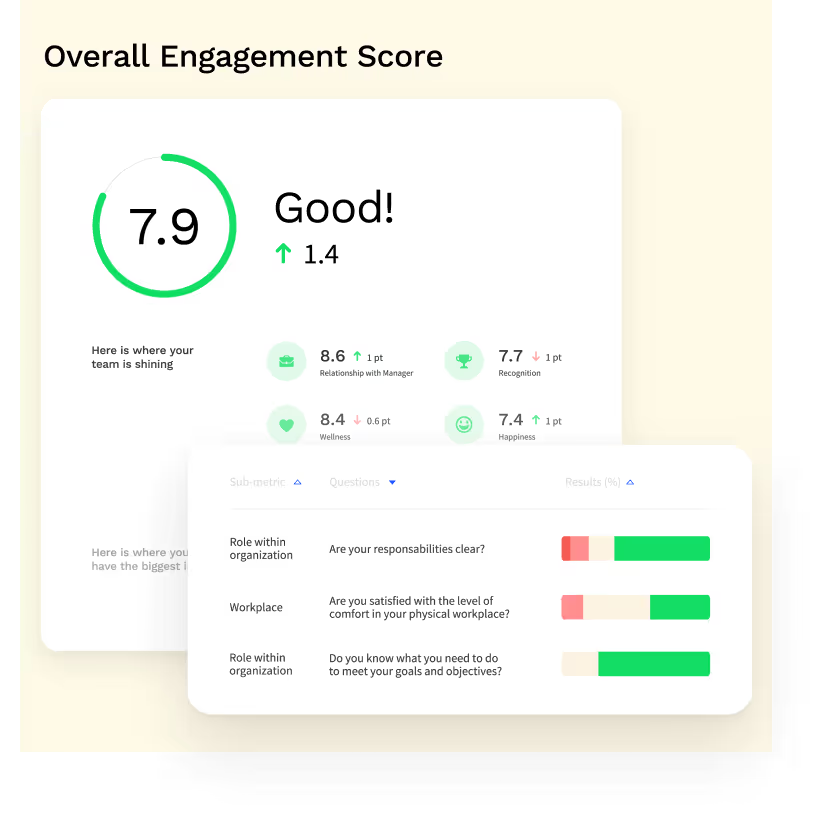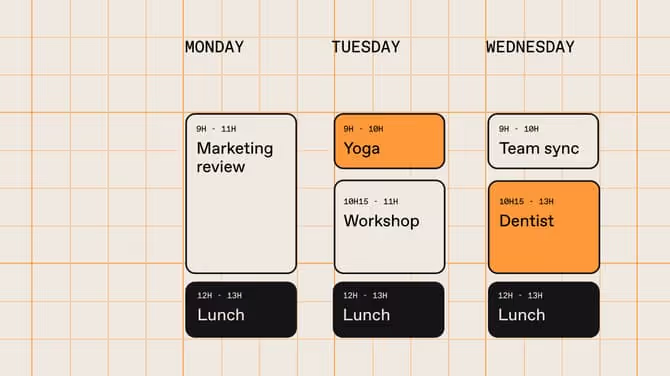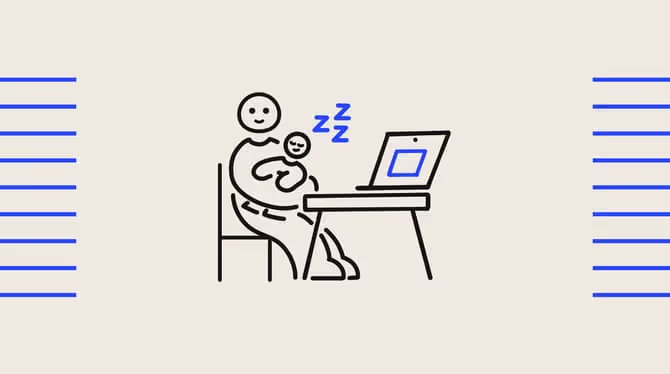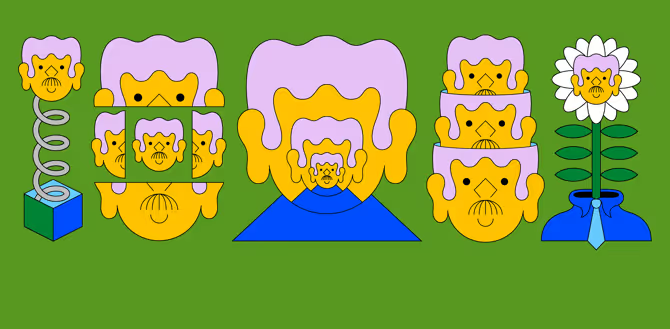The distributed workforce model: definition and benefits

From flawed to flawless: 5 steps to leading distributed teams

The pandemic catapulted the world's workforce into turbulent waters. Virtually overnight, enterprises made a digital transformation to a remote, hybrid, or distributed workforce model. This remote work revolution has utterly transformed the way businesses operate in the 21st century.
Technically, a distributed workforce is more than just a team of remote workers. A distributed team has no geographical limitations for employees and often operates with no physical office.
Instead, it comprises workers who perform their job from different physical locations and time zones. It also includes a core philosophy of many team members working towards a common goal via unified collaboration.
As a manager, how you approach your distributed work model is critical to your company's overall growth and success. In this article, we'll explore the distributed work model and how you can use its core values to your benefit.
The distributed workforce model
What makes the distributed work model so unique?
The pandemic forced many businesses to quickly switch to a distributed or remote workforce. However, as regions began to ease up on restrictions, many companies continued operating under the distributed work model.
A distributed workforce is unique because it doesn't require a business to have a physical location or headquarters. Instead, employees can collaborate and work from all over the globe.
Distributed work environments have become a boon for managers and employees alike, and it's here to stay. According to our latest data report, The State of Employee Experience, from Here on Out, the ideal work arrangement for 75% of respondents is a hybrid model. And less than 10% of people would like to go back to the office full time.
Why is the distributed workforce so important?
The distributed workforce model allows for greater adaptability for organizations. No longer confined to any constraints of physical locations, a properly managed distributed team empowers employees to work with greater flexibility and in more ideal work environments that encourage them to put their very best work forward.
An advantage of the distributed workforce model is that it requires clear communications — be it via the methods of exchanges, time and frequency, types of feedback, or channels of collaboration — all to help establish clear expectations for everyone. With clear expectations, everyone is working towards the same common goal, plus they feel engaged in the work that they're doing!
Here at Officevibe, like many other organizations, the pandemic forced us to work remotely full-time. We have since become a remote-first company and have learned a thing or two about how to keep our remote employee engagement high. Not only do we create tools that strengthen team building, collaboration, goal-setting, and employee engagement — we practice what we preach.
{highlight}
Are you interested in hearing more about our story? Here are 5 steps we took to improve employee engagement in our remote workforce.
{highlight}
What's the difference between remote and distributed work?
You may hear people interchangeably use the terms "distributed work" and "remote work."
The main difference between remote and distributed work is that remote workers usually operate out of a local office in the same time zone but don't always need to be at the office, whereas distributed workers are by default in different geographical locations and are not constrained by time zones.
Here is how the two compare further.
Distributed team vs remote team
Remote and distributed workforces are similar: both operate independently, outside their company's central hub. However, there are fundamental differences:
Remote work
A team of remote workers consists of one or more employees that usually operate in the same state or time zone. Some remote employees will occasionally come into the company's main office and meet face-to-face for their workday.
{highlight}
Example: Employees who work from home a few days a month—or even most of the year—who may also work in-person at company headquarters or satellite offices are remote workers.
{highlight}
Distributed work
This model contains a geographically distributed workforce. Team members can collaborate from multiple locations: at home via video call, a satellite office, or even a local coffee shop.
The distributed workforce model also involves a new way of thinking about and operating a business. It consists of an entire team of remote workers aligned toward the same goal.
{highlight}
Example: A company with no physical location but team members who work remotely around the globe from home offices or public spaces has distributed workers.
{highlight}
Benefits of using the distributed workforce model
Implementing a distributed workforce model can help your business grow and succeed. Let's look at the primary benefits organizations can gain from using this model.
1. Better employee engagement
With a distributed workforce, employees are more likely to become engaged with their work. It offers workers greater autonomy and independence, resulting in happier people with a deeper connection to their work.
Today's advanced technology also gives a distributed team the tools to connect and engage with their leaders and coworkers.
{highlight}
Example: Officevibe's employee engagement solution lets managers or HR (human resources) leaders measure and analyze employee engagement levels. It gives team members a safe space to express questions, concerns, ideas, or suggestions anonymously (if desired), helping them to feel understood and valued.
{highlight}

2. Increased productivity
In our latest research report on employee experience, more than half of the respondents surveyed said they felt more productive when working from home. Remote employees also take fewer sick days and shorter breaks. This model increased not only productivity during working hours but the quality of work as well.
Remote working can create an environment where employees feel more fulfilled, less stressed, and have greater freedom. And happier, more engaged employees are highly productive. Fortunately, you have an arsenal of practical tools to help you accurately gauge employee productivity and engagement.
One valuable tool for distributed teams is Officevibe's one-on-one meeting software. It lets managers share meeting agendas, take centralized notes, and set actionable goals for employees. So even when your workforce doesn't meet in person, Officevibe promotes regular healthy, honest communication that keeps the conversation going.
3. Expanded talent pool
With a distributed work model, companies have access to talented applicants worldwide. So, managers can hire a remote worker with the ideal skill set rather than settling for a less qualified candidate just because they need to hire nearby.
Conversely, in traditional models and some remote work models, employees must live close to their company's physical office space. That geographical caveat puts restrictions on who can apply for the job.
Remember, just because team members live far from their coworkers doesn't mean they can't communicate with each other. A distributed team member can easily collaborate with coworkers via video conferencing, phone calls, or text messaging.
4. Flexible hours
Working remotely offers freedom and flexibility that traditional work models don't provide. In addition, employees who get to choose their hours often have better time management skills.
Remote work also eliminates the daily commute. With more time spent with family and friends, workers are happier and more productive. Plus, employees can choose the remote locations where they want to work, whether they prefer a coffee shop, kitchen table, or a beach with good wifi!
Flexible work schedules may also allow other activities that a traditional nine-to-five job does not.
5. A healthier work-life balance
Showing up in person for a 40-hour workweek makes it challenging for employees to juggle life's responsibilities. Fortunately, a distributed workforce model helps your staff manage a healthier balance between work and life obligations.
With more flexible hours and less time spent on commute, effectively managing time, work, family, and fun become easier for employees. In turn, this fosters greater satisfaction and fulfillment. As a result, your company will have happier, healthier team members.
6. Improved employee retention and loyalty
Retaining skilled and talented employees is one of the key drivers for companies in today's competitive work environment. One of the most effective ways organizations can improve loyalty and reduce turnover is by implementing a distributed workforce model. Why? Because employees are craving flexibility.
The ideal work arrangement is a hybrid model for 75% of respondents, and less than 10% would like to go back to the office full time
Officevibe survey data
Remote work instills trust in your employees and shows them that you care about them as a person - not just a job position to fill. By offering an environment where they can do their best work, remote work creates an exchange where the employee naturally wants to perform. It also answers some of the non-negotiables for today's employees, like better work-life balance. Employees can meet all their work and life obligations with greater ease, reducing turnover and increasing fulfillment.
7. Attain greater coverage
Are you an international organization with customers all over the globe? If so, a distributed workforce can benefit your organization tremendously. Companies with a distributed workforce can reach people in multiple locations and time zones virtually any time of day.
Providing global coverage when servicing customers lets your business grow and expand faster. Remote work can even create more hours in the day.
{highlight}
Example: A Florida company can operate from 7 a.m. to 7 p.m. without paying overtime by hiring employees in California.
{highlight}
8. Reduce overhead costs
Employees who work in-person need office space to complete their work. Unfortunately, maintaining one or more office locations has prohibitive associated costs. A survey from Global Workplace Analytics found that employees who work at home just half the year can save a company $11,000 annually.
Companies with a distributed workforce can experience cost savings in many different ways, including:
- The initial cost of purchasing/leasing real estate
- Rent and overhead costs
- Energy and power bills
- Office furniture
- Office supplies (i.e., paper, pens, cups, toilet paper. etc.)
- Technology and electronics (computers, phones, tablets, etc.)
- Janitorial and cleaning services
- Travel expenses for business trips
9. Effortless growth and faster scaling
Faster scalability is a tremendous advantage for many companies. However, needing a physical office for employees severely limits the expansion of a traditional company. It's not a business model conducive to rapid growth or scaling.
In a distributed workforce model, businesses hire employees from different corners of the world. It doesn't require in-person interviews, either. Instead, holding a video conference is the new norm for collaborating in today's modern work environment. When it comes to remote onboarding, there are even HR solutions, like Softstart, tailored specifically for new employee needs.
10. Diversify your team
A traditional work model limits a manager's hiring capacity to a single geographical location and its people. In a distributed workforce model, employees can work from around the globe. A diverse team results in new ideas, more productivity, and richer company culture.
A diverse workforce also fosters more innovation and ingenuity in your team. With different minds, values, cultures, and experiences, distributed teams are highly skilled and excellent problem solvers.
Distributed teams with diverse backgrounds promote success and growth in an organization. When you stop limiting your hiring pool to one geographical area, your access to diversity grows.

Distributed workforce model FAQs
What is a fully distributed company?
A fully distributed company has no brick-and-mortar location where employees work face-to-face. Instead, regular team meetings and collaboration occurs using modern technology, like:
- Video conferences
- Phone calls
- Messaging apps
- Workflow software
- Business apps
- Cloud computing
- AI-powered programs
A distributed model also consists of employees aligned towards a common goal and working autonomously. It creates a diverse environment that stimulates fresh ideas, ingenuity, and effective communication among your team.
How do distributed companies keep in-house employees and remote workers connected?
A distributed company can use various tools to connect workers during their workday. For example, video calls are standard fare for team meetings and collaboration on daily tasks or other projects.
Feedback surveys are another valuable tool for maintaining employee connections and managing a distributed workforce. They allow managers to keep their thumb on the pulse of their team and measure overall satisfaction in their organization.
The ability for employees to connect easily is critical to a company's long-term success. According to Officevibe's Pulse Survey data, 31% of employees wish their manager communicated more frequently with them. With the ability to quickly connect with your team, you can ensure every member feels heard and valued.
What types of tools do you need to switch your company or team to a fully distributed work model?
Making the switch to a fully distributed company can be daunting. However, you have numerous tools at your disposal to help you begin. For example, workflow software, like Officevibe, is a great place to start.
Officevibe allows managers to organize information and connect with employees quickly and efficiently. Its innovative tools increase employee dedication and engagement across the board. You can also integrate Officevibe with your favorite apps to measure and analyze your team's feedback.
Is the distributed workforce model sustainable?
Yes, the distributed workforce model is sustainable. While distributed teams face unique challenges, the benefits outweigh the potential obstacles.
To begin, you'll need the right tools to keep your employees working remotely, connected, and engaged across various locations and even time zones. However, once you develop a remote working model, a distributed team is entirely sustainable for the long term.
{highlight}
Ready to get started? Officevibe helps remote teams work closely even while apart. It's a single platform that helps team leaders tap into how their employees are really feeling and fosters action-oriented one-on-one conversations. Consider it the foundation of your tech toolbox for the future of remote work with a human touch.
{highlight}
Give HR and managers the clarity, confidence, and connection to lead better every day.


%20(1).avif)


.avif)
.avif)





%20(1).avif)


